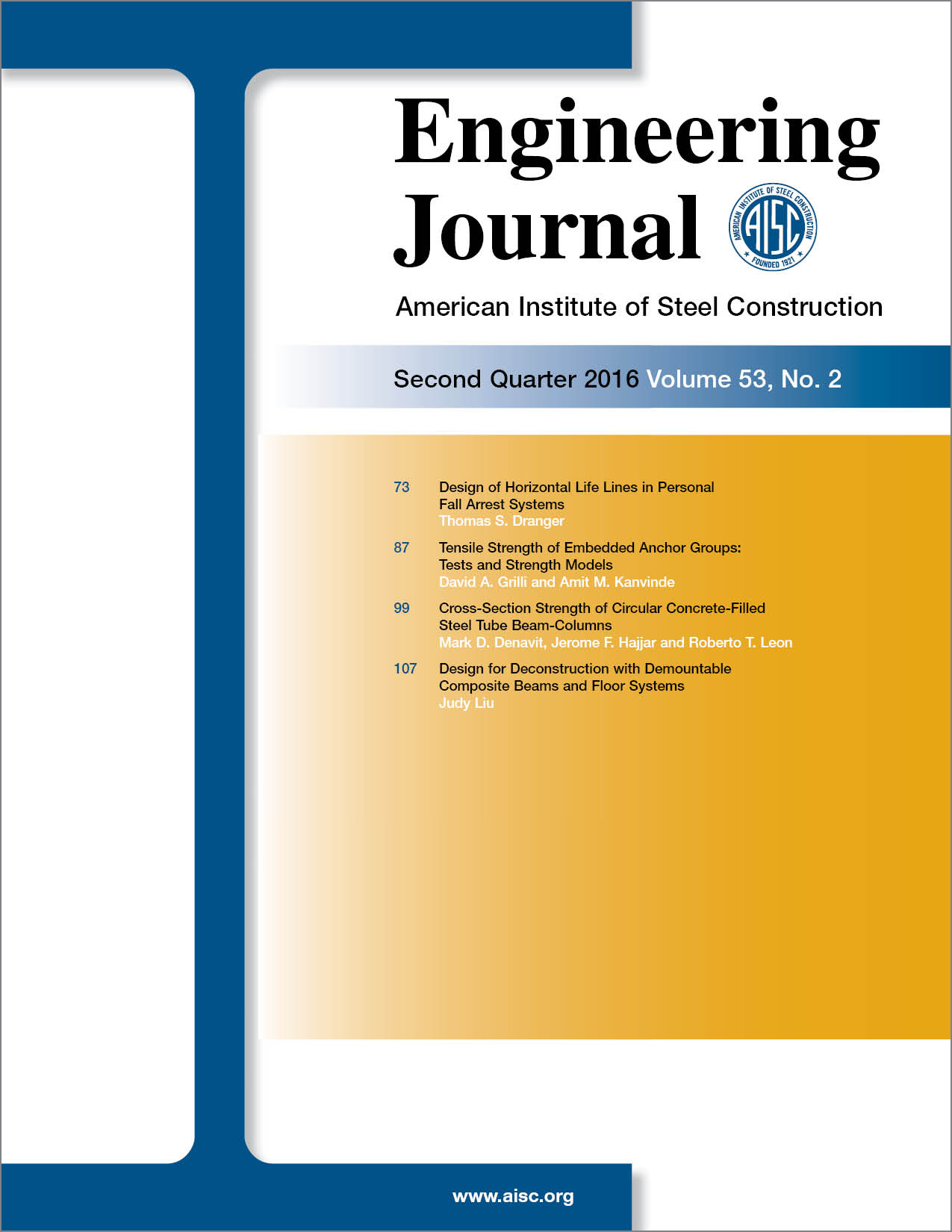Design of Horizontal Life Lines in Personal Fall Arrest Systems
DOI:
https://doi.org/10.62913/engj.v53i2.1098Keywords:
horizontal lifeline, personal fall arrest systems, Occupational Safety and Health Administration, harness and lanyard, steel cable, galvanized aircraft cable, life safety, fall protectionAbstract
Personal fall arrest systems have become common in construction, maintenance, and many other activities including recreation. Many use a horizontal lifeline (HLL), often a steel cable. Their design is governed by Occupational Safety and Health Administration (OSHA) regulations that require “supervision by a qualified person” and a factor of safety of at least two. In contrast to a vertical lifeline that can be analyzed as a linear spring, a HLL has non-linear elastic behavior. The analysis is complicated by the fact that both the maximum arresting force and the geometric shape of the HLL at the stopping point are initially unknown. Some suggestions for estimating the arresting forces are known to be grossly in error for the general case. Greater confidence in a design is realized when arresting forces are found by rational analysis. This paper gives a summary of regulations, a reiterative method of analysis, a discussion of the limit states, and some appropriate modifications in the case of unacceptable behavior. The effects of assumptions used in the analysis are discussed in the conclusion.

